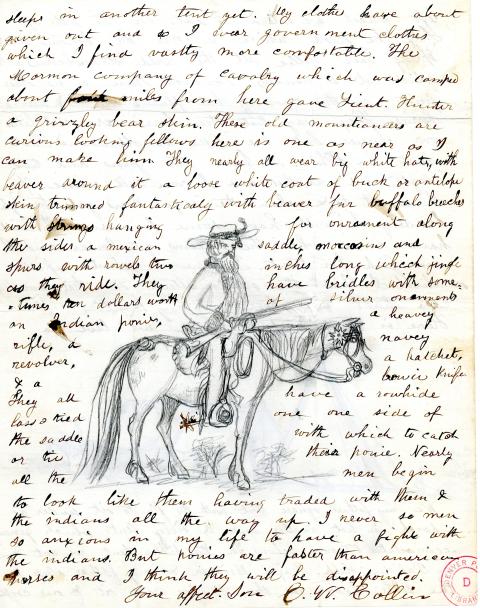- Home
- Encyclopedia
- A Frontier Census: Fort Laramie In 1860
A Frontier Census: Fort Laramie in 1860
Imagine crossing the footbridge over the Laramie River in 1860 and strolling across Fort Laramie. Within a few miles you would see a broad range of military and civilian life on the pre-Civil War frontier: infantrymen, dragoons, traders, tribal people, laborers and even young families headed west.
In June 1860 a deputy U.S. marshal arrived at the fort to document the area’s population for the 8th United States Census. His work provides a rare view of the fort and its people, documented and frozen in place over the span of a few weeks. We can use the census to give us a few introductions.
The setting
Fort Laramie, the military post, was purchased by the United States government from Pierre Choteau and Company, successor to the earlier American Fur Company, in 1849. By the time of the census, the fort was garrisoned by elements of the 10th U.S. Infantry and the 2nd Dragoons—that is, heavy cavalry. Officers, men, civilian support staff and others made up a population of 366 individuals. The civilian community beyond the edges of the fort in 1860 numbered an additional 300 or more, including a few of the more than 21,000 emigrants who passed through that year headed to Utah, California or Oregon with their goods loaded in wagons and accompanied by their oxen, mules and other livestock. A few Mormons moved their belongings in handcarts. Other hardy individuals rode horseback; some walked.
Freighters hauled tons of material to Fort Laramie and points west to supply the army or commercial concerns. Other travelers—and mail—passed through Fort Laramie aboard stagecoaches of the Central Overland California and Pike's Peak Express Company. Starting in April 1860, priority mail, packed in the four pockets of the leather mochilas laid over the saddles of Pony Express riders, followed the same route, adding excitement to daily life.
An official post office at the Fort Laramie sutler’s store served the area, thus providing a source for mail sent and received by residents and travelers alike. Since the post office was the only one for hundreds of miles, it was a stop for the Pony Express. Express stations were established at James Bordeaux’s ranch east of the fort. West of the fort the next station, nine miles away, was at Register Cliff.
Sioux, Cheyenne and Arapaho people were constantly on hand, exchanging buffalo robes for tools, blankets, coffee, sugar, flour, lead, powder and, surreptitiously, alcohol. Along with the military and non-native civilians, they were served by independent traders and the post sutler. At the same time the civilian community included blacksmiths, stage drivers, Pony Express riders and many more residents. The many children of emigrant and resident families added younger voices to the stew of sounds, smells and energy. Documenting each individual in this loud and busy environment must have made the census taker’s job a challenge, yet he finished his work in a surprisingly short time.
Taking the census
Article I, Section 2 of the U.S. Constitution mandates a census of the United States population every ten years. For the 1860 census approximately 4,400 U.S. marshals and their assistants went to work nationwide beginning June 1. Citizens over the age of 20 were required to cooperate with the taking of the census; data was gathered and filed within five months. Standardized forms in triplicate include people’s name, age and sex and their racial identification noted with “W” for Whites, “B” for Blacks or “M” for Mulattoes—a term then used to denote people of mixed White and African descent. Native Americans in the territories were not included.
Place of birth and profession or trade for individuals over age 15 were also included. There were columns on the forms to record the value of personal real estate (though this column was not used at Fort Laramie) and personal property. Respondents often gave false information about their assets, however, so this is not a reliable source of information.
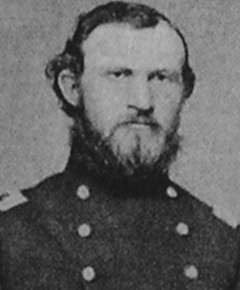
At the beginning of May, Nebraska’s Dakota City Herald reported strong competition for jobs to serve as deputy U.S. marshals to conduct the census. They were attracted by “Liberal” pay “fixed at two cents per head of the population counted, with ten cents per mile for travel, ten cents for the statistics of each farm, fifteen cents for each establishment of productive Industry and two cents for each death reported.”
Fort Laramie was then in Nebraska Territory. Assistant marshals hired to survey portions of Nebraska and Utah territories along the Oregon-California Trail included Sterrit M. Curran, who traveled east from O’Fallon’s Bluff to Fort Kearny and beyond; George D. Snider who surveyed the region including Fort Bridger; and John Y. Clopper, who recorded data for Fort Laramie and areas in what is now northern Colorado. The public was warned by The Huntsman's Echo (Wood River, Nebraska Territory) on June 14, 1860, that readers should “Look out for the Census takers! Messrs. Curran & Clopper, Dept. Marshalls are attending to the people in the upper Platte Valley.”
The civilian population
John Clopper resided in Merrivale, north of Denver City—both in future Colorado—and probably traveled to Fort Laramie by stagecoach. He conducted the census for the civilian community around the army post between June 15 and June 29. It could not have been an easy job and in fact, he missed many individuals during his survey. People were moving rapidly, passing through or stopping for part of a single day.
While Mary Jane Guill and her family do not appear in the census, for example, she describes what everyone viewed that year. She saw “Some very nice houses for the plains one store plus Several blacksmiths shops, had some shoes made for the oxen. Swapt off Hughes’ lame ox for another in his place give some boot [extra items in trade] . . .The town of Larimie is full of Indians their Wigwams all through town except on main street. The soldiers was some curiosity to me. We visited the post office . . . move this evening.”
Clopper did name long-term and temporary civilian residents totaling 306 individuals, including 34 women, and there were 66 children under the age of 16. He clearly included many west-bound emigrants in his report. They just happened to be lying over, camping in the immediate area when he walked by. Some can be assumed to be travelers by their occupations. Four of these are identified as miners. One, a Daguerreian photographer named W.F. Bailey, is known to have set up operations in San Francisco at the other end of the trail. Others more certainly were emigrants traveling through the area.
Erskine Fish, for example, an Iowa farmer listed as being “on the trail,” arrived with his wife Mary and sons, ages 8 and 5, at Fort Laramie on June 28. Mary described her view of the community: “a quite imposing appearance, with buildings painted white.” Two days after their arrival the party continued west, in the company of the Samuel Alvard family, also from Iowa.
It was just happenstance that they all connected with the census taker when they did. In the general absence of records identifying emigrants, the census clearly provides helpful detail on travelers headed west and families are especially evident. Normally, each group in a community would be listed by the number of the home buildings they occupied. For these travelers the census number reflected a home that was a wagon with associated belongings and livestock.
The Henry Andrus party of nine came from Vermont while the E.B. Hills farm family of eight and Samuel Goodrich with his wife and twin 8-year-old daughters came from Wisconsin. Thirteen members of the John L. Wedikon family made up two groups, presumably in at least two wagons, also headed west from their Iowa farm lands. The Wedikons had respectable combined personal property they valued at $3,000. J. S. Wiley’s extended family of 10 showed themselves to be successful farmers with personal goods, including tools and livestock, valued at $1,000. Rufus Austin’s family group of eight from Illinois was noted to have personal property valued at an impressive $2,000—around $108,000 in 2023 dollars. These groups would seem to be well-fixed for the journey and life in the West. Other family groups often list no or comparatively little value in personal property. Given the need for stock, vehicles and supplies, one suspects that some respondents were not forthcoming about the value of their property while others were ill prepared for the journey.
The census also gives us the identities of more long-term residents. In building 47 lived E.H. Ellerton age 30, station keeper for the stage line. At the same location were two stage drivers, Benjamin Smith, 26 and Albert Houston, 30. The stage line would also have employed laborers to manage vehicles and horses, but they are not specifically identified, or at least none lived in the same building. Interestingly, trader Leon Pallardy (identified as Leo Pollardie in the census) is listed as living in Ellerton’s building. He had been born in Missouri and involved with the American Fur Company for many years. Working as an independent trader, he also found employment as an interpreter.
In a separate building, we learn of W. Simonds, the 21 year-old keeper of the Pony Express station. Of the same age at this location was express rider B.W. Thompson. While he is not listed as an express rider in the census, we know from other sources that a man named Rodney Babbit, recorded as a laborer living in a building near the station, also served as a rider. It is likely that he was not just a rider; also he may have functioned as a laborer handling horses and equipment. He lived with several laborers who we can assume were connected with the Pony Express or stagecoach operations.
The lingering fur trade
One of the most telling aspects of the census is the documentation of traders inhabiting the region. With Fort Laramie as a base of operations, traders could receive Sioux, Cheyenne and Arapaho hunters bringing buffalo hides tanned by the women to exchange for goods. The traders also traveled out to meet customers at village sites. The trade was quite profitable, providing employment for traders and their clerks, blacksmiths and other staff.
While Fort Laramie had been purchased from the fur company by the government in 1849 to serve as a military base, the community around it nurtured the on-going hide trade until just after the end of the Civil War, when warfare with the tribes increased and buffalo herds began diminishing faster.
Instead of one company dominating the local trade as it had before 1849, a core of actively competing traders now vied to profit from the sale of powder, lead, alcohol and other items. The buffalo robes they took in payment were bundled for shipment to St. Louis, Mo. and other centers of commerce to the east. Many of the traders had been active trappers and traders in earlier days. Twenty-five are named in the census and many are documented to have substantially valued personal/business property. A few merit more detailed commentary.
In the entire Fort Laramie census only three Native people are identified by race. All were wives of traders, essential in maintaining trade with Native communities. By forming family connections to the tribes, traders gained not only companionship, but also developed loyalties with the extended Native families of their wives.
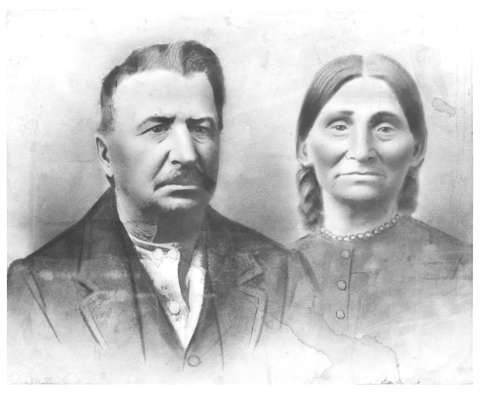
Perhaps the most prominent of these was James Bordeaux (nick-named Mato or the Bear) who had worked at Fort John, commonly called Fort Laramie, since the mid-1830s and who managed American Fur Company interests at the post starting in about 1842. He had many business relationships with other traders and, in the early 1840s, married a Brule Lakota Sioux woman named Huntkalutawin and called Marie, whose brother was Swift Bear, a notable leader among the Brule people. In the census, Bordeaux is shown living with six members of his family ranging in age from 2 ½ months to 19 years. His property was valued at $5,000.
Antoine Reynal is another of the famous fur traders. Originally from Missouri, he lived with Louisa Reynal, identified as being Indian, age 16 and there was a child named Jane, age 4. Reynal’s property was valued at $3,000. A trader named Henry Hoecher is listed as being married to Mary, an Indian, and as having property worth $4,000. Five other traders are listed as inhabiting the same quarters as the Hoechers, including Jules Ecoffey, a well-known trader, interpreter and guide. The census documents a final trader named Oliver Chansse, who had an Indian wife named Charlotte. Their building and others adjacent housed clerks and two blacksmiths. Clearly, this operation profited from selling and trading goods to emigrants and from blacksmith services to repair wagons and shoe horses and oxen.
Other traders assuredly had families with Lakota women, but either they are not identified as Indian or were not living with the men at Fort Laramie. Joseph Bissonette had large families with Oglala and Brule women. He is listed in the Fort Laramie census perhaps because he was visiting there. During his career, he had crossed paths with John C. Fremont, Stephen Watts Kearny and many other luminaries of the time. He had moved as interpreter to Deer Creek with the Upper Platte Indian Agency and operated a substantial post there. Bissonette’s operations in the 1850s had him competing with the big fur companies, and he earned a reputation for selling liquor to Native American customers. At the time of the census, he was temporarily living or possibly visiting with three other traders and three of their clerks. The combined value of their property was over $21,000.
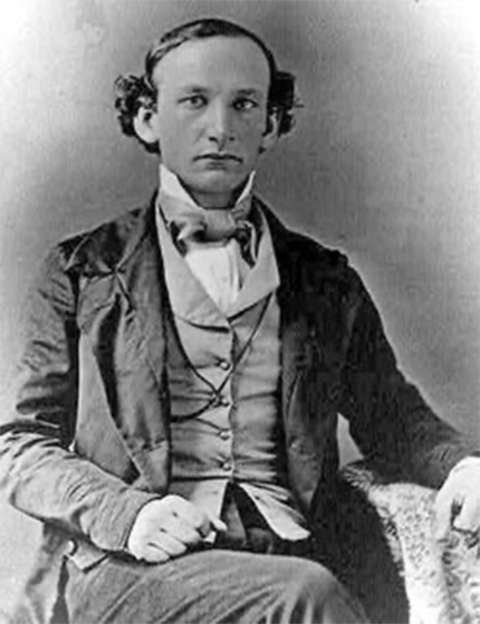
Without doubt the most successful of the traders was G.P. Beauvais. As a mountain man and trapper he had ascended the Missouri in 1831, trapped with the firm of Pierre Chouteau, attended the rendezvous of 1833 and 1834, built an operation called Five Mile Ranch east of Fort Laramie in 1853 and another operation called Star Ranch created in 1859 east of Julesburg, in present northeastern Colorado.
He was immensely successful in the fur trade and in selling goods and livestock to immigrants. In 1856, for example, he shipped 1,830 buffalo robes, 126 beaver pelts and 125 other pelts to St. Louis. Beauvais had wives and families in Missouri and among the Sioux. Enumerated in buildings 64 and 65, Beauvais and his son-in-law William F. Lee, listed a combined worth in their businesses of $33,000. He was not a permanent resident and likely was stopping over when the census taker recorded his information.
The military post
Deputy Marshal John Clopper conducted the census of the military post from June 15 to June 29. No doubt military organization and control made this part of the job much easier. Military records such as muster rolls provide detailed information on who served when and where. The census supplements this with an over-view of the command at Fort Laramie. Capt. John Dunovant of the 10th Infantry was post commander with a garrison made up of companies C, D and K of the 10th U.S. Infantry and C and D companies of the 2nd U.S. Dragoons. In total there were 366 military residents among which were a number of civilians, including a laborer, interpreter, a cook and others.
The overall profile of the soldiers is a point of interest. Not surprisingly, three officers were older, one 40 and the other two in their early fifties. The youngest and only teen-aged enlisted soldier was an 18-year-old bugler from Pennsylvania, the oldest soldier a 51-year-old bugler from Hungary. Only a couple of the soldiers were in their 40s; most were in their 20s and early 30s.
And two-thirds of the garrison were soldiers who were foreign-born. More than half of these were of Irish birth and a contingent of about 50 came from Germany, Prussia and Bavaria. There were a few more from Holland than from England and four or fewer came from European nations such as Italy, Poland, Norway, Sweden, Spain, Denmark and Switzerland. It is suggested by common surnames, nations of birth and placement in the same companies that it was not uncommon for brothers to be in the ranks. The census clearly bears out historical interpretations of the army showing it to employ a huge percentage of new Americans serving the needs of a young nation that would soon face Civil War.
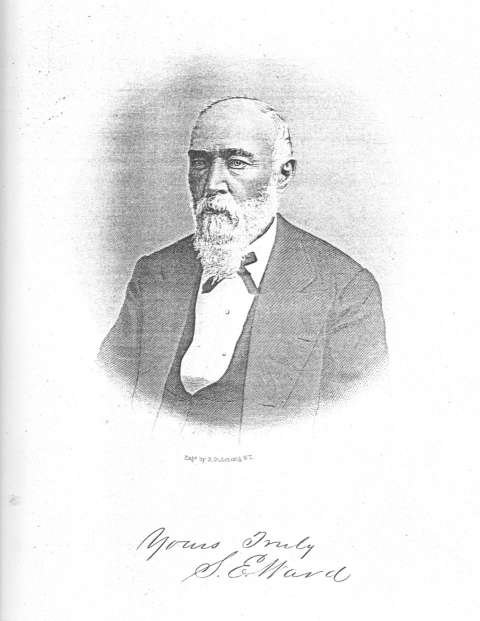
Each regimental company was allowed to employ civilian women as laundresses, paid for services by their customers. Often the laundresses are ignored in the historical record, but the census gives us their names, ages and nationalities. Of the 12 laundresses listed, three were born in New York while the rest immigrated from many locations including Norwegia (present Norway), Prussia, Ireland and Holland. While some of their surnames match those of enlisted soldiers, it is not known if any of them were married. They ranged in age from 20 to 35. All suffered through harsh weather and the drudge of hauling water from the river, and scrubbing, rinsing, wringing and drying rough woolen uniforms for hours on end.
There were few other women on the post. Quartermaster C.E. Bennett lived with his wife, Caroline, and they had a domestic servant named Benjamin McCullaugh. The post physician was Dr. E.W. Johns who had the company of his wife, S.A. Johns. A farmer named Forbes was hired to keep a garden to supplement the diets of the soldiers, and his wife, Augusta, and a 9-year-old son lived in the house that also accommodated the post blacksmith, Henry Bonner.
It was the post chaplain, William Vaux, who brought family life to the post grounds. He and his wife had six children ranging in age from 3 to 20. Vaux, with the assistance of his older daughter Victoria, founded the region’s first school in 1852. It is understood that the children of civilians were allowed to attend. Ordnance sergeant and postmaster Leodegar Schnyder had a wife and one daughter at the time as well, but for some unknown reason they are not identified in the census.
The dominating civilian figure on the post was the official sutler, Seth Ward, a Virginian who had been active in the fur trade since the late 1830s, and who had a notable trading post, beginning in 1851, in partnership with William Guerrier. The partners built a bridge across the Laramie River in 1853 and in effect, along with a number of other traders, they were founders of the Wyoming cattle industry. They bought worn-out oxen and horses bought from emigrants and sold them fattened, recuperated animals at a high profit. Their post earlier served as a station for J.M. Hockaday’s stage line (predecessor to the Central Overland California and Pike’s Peak Express Company) to Salt Lake City. Ward had a small family with a Sioux woman and in 1857 he was appointed official sutler at the fort.
William Guerrier was killed in an accident in 1858 and a man named William Bullock became Ward’s operations manager. Seth Ward married a young widow in Westport, Mo., in early 1860, but neither she nor his Sioux family are reflected in the census. His wealth, measured at $10,000 in the census, supported a household including a clerk, an elderly French porter, and a German-born cook. Another employee named N.R. Fitz Hugh is identified as a sutler. Bullock is not mentioned and it is unknown if he was briefly replaced by Fitz Hugh or, indeed, did not start with the firm until after 1860 rather than in 1858.
Changes
The Fort Laramie documented by John Clopper in the summer of 1860 faced certain and dramatic change in a short period of time. Locally, change came with arrival of the transcontinental telegraph in August 1861 and with that the Pony Express was gone. Stage travel ended in 1862 as the line was moved to the southern route from Denver to Salt Lake City along the Overland Trail. The subsiding trade in buffalo robes would come to an end within five years. Native peoples were forced onto reservations and away from the area after warfare intensified beginning in 1865-1866.
And the most significant change of all was very much in the air. Abraham Lincoln was elected president on Nov. 6, 1860. The Civil War was coming. Many soldiers, especially the officers, now faced a choice of loyalty. Even the census taker was compelled to move east. John Clopper attained the rank of lieutenant colonel of the 2nd Missouri Cavalry, known as “Merrill’s Horse,” mostly fighting Confederate guerillas in northern Missouri. Many others would choose to serve the Confederacy.
Of Lasting Value
The movement of residents to and from Fort Laramie assured that the census document was only accurate for the time it was taken. It remains a valid source for identifying genealogical information. It also reminds us of two truths. First, the fur trade in the area did not end when Fort Laramie was purchased for a military post. It faded slowly as the fur trade itself subsided. Second, the standard history narrative of Fort Laramie focuses almost exclusively on the military.
By contrast, the story of the civilian populace serving and surrounding the post still calls for acknowledgment and further exploration. The census of 1860 is just one measure of the diversity and, in a few cases, the wealth of that civilian population. It remains for historians to amplify the stories of these people. While the census tells us much, other documents are needed to flesh out peoples’ stories, to tell not just who they were, but what they did and what kinds of lives they lived. The story of Fort Laramie is not just about the fur trade and the military. It is about a broad community of people and their places in history.
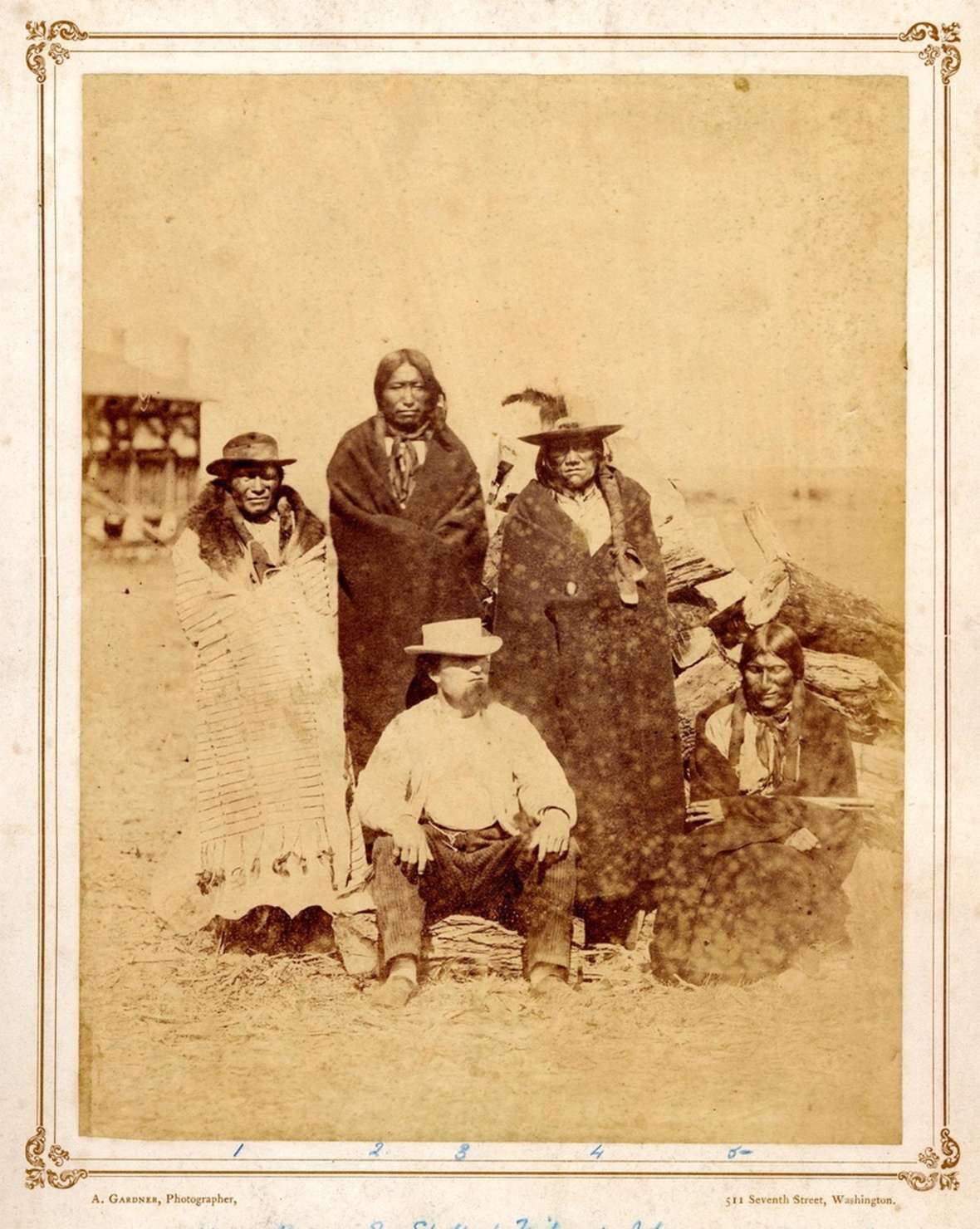
WyoHistory.org would like to thank the Wyoming Cultural Trust Fund, for support that in part made this article possible.
Editors’ note: This article was funded in part by Rocky Mountain Conservancy, a nonprofit Cooperating Association based in Estes Park, Colo., through book store sales at the National Historic Trails Interpretive Center in Casper, Wyo. We offer our special thanks.
Resources
Primary Sources
- Fish, Mary and Lafayette. Diaries. Across the Plains in 1860. California State Library, Sacramento, Calif. See also MSS C-F 140. Bancroft Library, Berkeley, Calif.
- Guill, Mary Jane. “The Overland Diary of a Journey from Livingston County, Missouri, to Butte County, California, May 5 to September 5, 1860.” Typescript. California State Library, Sacramento, Calif., 1949.
- Measuring America: The Decennial Censuses From 1790 to 2000, accessed May 25, 2022 at https://www.census.gov/library/publications/2002/dec/pol_02-ma.html.
- United States Department of the Interior, Census Office. Eighth Census, United States—1860; Instructions to Marshalls, Instructions to Assistants. Washington, D.C.: Government Printing Office, 1860, accessed July 15, 2022 at https://www2.census.gov/programs-surveys/decennial/technical-documentation/questionnaires/1860/1860-instructions.pdf.
Secondary Sources
- Carroll, Murray L. ”Robert Foote: A Forgotten Wyoming Pioneer.” Annals of Wyoming 74, no. 1 (Winter 2002): 9-23.
- Cassity, Michael. Fort Laramie’s People, An Exploration in Historical Context. Broken Arrow, Okla.: Michael Cassity Historical Research and Photography, accessed Nov. 12, 2022 at http://www.michaelcassity.org/uploads/1/2/7/7/12777320/_cassity-fort_laramies_people3_1.pdf.
- Dickinson, Ephriam III. “Shadowy Figures About whom little is known: Artists of the Simpson Expedition.” Utah Historical Quarterly 83, no. 4 (2015): 270-89.
- Hanson, Charles E., Jr. “Geminien P. Beauvais.” The Mountain Men and the Fur Trade of the Far West. Vol. VII. Spokane, Wash.: The Arthur H. Clark Co., 2003, 35-43.
- Hyde, Anne. Born of Lakes and Plains: Mixed-Descent Peoples and the Making of the American West. New York: W. W. Norton, 2022.
- McChristian, Douglas C. Fort Laramie, Military Bastion of the High Plains. Norman, Okla.: University of Oklahoma Press, The Arthur H. Clark Co., 2008.
- McDermott, John D. “James Bordeaux.” The Mountain Men and the Fur Trade of the Far West. Vol. V. Spokane, Wash.: The Arthur H. Clark Co., 2002, 65-80.
- ________________. “Joseph Bissonette.” The Mountain Men and the Fur Trade of the Far West. Vol. IV. Spokane, Wash.: The Arthur H. Clark Co., 2001, 49-60.
- Mattes, Merrill J. “Seth Ward.” The Mountain Men and the Fur Trade of the Far West. Vol. III. Spokane, Wash.: The Arthur H. Clark Co., 2001, 357-384.
- Murray, Robert A. Fort Laramie, “Visions Of A Grand Old Post.” Fort Collins, Colo.: The Old Army Press, 1974.
- “Old Letter Book Discloses Economic History of Fort Laramie, 1858-1871.” Agnes Wright Spring, editor. Annals of Wyoming 13, no. 4 (October 1941): 237-321.
- United States Department of the Interior, National Park Service. Barbour, Barton H. Special History Study: The Fur Trade at Fort Laramie National Historic Site. Santa Fe, N.M., 2000, accessed December 27, 2022 at http://npshistory.com/publications/fola/fur_trade.pdf.
Illustrations
- The 1858 photo of Fort Laramie is from the William Lee papers, Lee-Palfrey Collection, Manuscript Division, Library of Congress no. LC-USZ62-100354, via Wikipedia. Used with thanks.
- The photo of former U.S. Deputy Marshal John Clopper is from a website on the Civil War battle of Vassar Hill in Missouri. Used with thanks.
- The photo of John Dunovant, commandant at Fort Laramie in the summer of 1860, is from findagrave.com. Used with thanks.
- The engraving of Seth Ward is from the Missouri Valley Special Collections at the Kansas City Public Library. Used with thanks.
- The drawing of James Bordeaux and his wife Huntkalutawin, also called Marie, is from Wyoming State Archives. Used with permission and thanks.
- Caspar Collins’s 1862 sketch of a mountaineer in a letter home to his mother is from the William O. Collins family papers at the Denver Public Library. Used with permission and thanks.
- The 1868 photo of Leon Pallardy, Fast Bear, Spotted Tail, John and Long Hair is from the collections of the British Museum. Used with thanks.
- The photo of Henry Maynadier was previously available at generalsandbrevets.com, a site that is defunct as of early 2023. Used with thanks.
- The photo of Samuel Starr, captain of the 2nd Dragoons at Fort Laramie in 1860, is from the Library of Congress via Wikipedia. Used with thanks.
- The photo of Barnard D. Bee, captain of Company D of the 10th U.S. Infantry at Fort Laramie in 1860 and later a Confederate general, is from the collections of the Confederate Memorial Literary Society managed by the Virginia Historical Society, via Wikipedia. Used with thanks.
- The photo of Robert Foote is from the history and genealogy collections at the Johnson County Library in Buffalo, Wyo. Used with permission and thanks.


